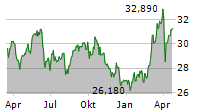NORTHAMPTON, MA / ACCESS Newswire / June 3, 2025 / Veolia North America:

When it comes to removing PFAS from water, sometimes the solution lies in the science of bubbles. While many treatment methods focus on filtering or absorbing these compounds, a proven technology called foam fractionation is gaining renewed attention in PFAS treatment - by literally lifting these contaminants out of water.
Understanding the Bubble Effect
Before diving into how foam fractionation works, it's worth understanding why this approach is so effective. PFAS molecules have unique properties - they're both hydrophobic (water-fearing) and hydrophilic (water-loving). This dual nature causes them to naturally concentrate at air-water interfaces, like the surface of bubbles. It's this same property that made PFAS so useful in firefighting foams - and now it's being used to mitigate them.
The Science Behind the Bubbles
Foam fractionation works through a remarkably elegant process:
Air Bubble Introduction: Bubbles are introduced at the bottom of a treatment column, creating a stream of rising air bubbles through the contaminated water.
PFAS Attraction: As these bubbles rise, PFAS molecules attach themselves to the bubble surfaces, much like soap molecules cluster around air bubbles in dishwater.
Foam Collection: At the top of the column the PFAS-rich foam spills over and is collected, effectively concentrating the contaminants for disposal.
Benefits for Water Treatment
This innovative approach offers several distinct advantages, including:
Ability to concentrate PFAS for more efficient disposal
Lower energy requirements compared to some other treatment methods
Effectiveness across a wide range of PFAS compounds
Reduced waste generation through targeted separation
Minimal performance impacts by other contaminants
Effective across a wide range of PFAS compounds and concentrations
Bulk PFAS reduction without the use of filtration materials such as carbon
Real-World Applications
The technology has shown promising results across various scenarios:
Industrial Wastewater: Manufacturing facilities and airports have successfully implemented foam fractionation to treat PFAS-contaminated wastewater streams.
Municipal Treatment: Water utilities are exploring this technology as a cost-effective addition to their treatment processes.
Remediation Projects: Environmental cleanup projects are utilizing foam fractionation for its ability to handle high PFAS concentrations.
Integration with Existing Systems
One of the most appealing aspects of foam fractionation is its ability to complement other treatment technologies. Treatments can combine:
Pre-treatment steps to remove suspended solids
Foam fractionation for PFAS concentration and removal
Polishing steps using traditional technologies like granular activated carbon (GAC) or ion exchange (IX)
The Future of Foam Fractionation
As regulatory standards become more stringent, understanding and implementing effective treatment options becomes critical. Organizations that investigate and adopt proven technologies now can better position themselves to meet both current needs and future requirements. So it's not surprising that water treatment facilities and industrial operations are increasingly exploring foam fractionation technology's potential, with pilot programs demonstrating promising results across various applications.
Key considerations for decision-makers:
Optimizing treatment efficiency while managing costs
Meeting increasingly strict regulatory requirements
Selecting scalable solutions for long-term sustainability
Building public trust through proactive PFAS management
The Power of Bubbles: A Clear Path Forward
Foam fractionation represents a perfect example of how understanding PFAS behavior can lead to breakthrough treatment solutions. By harnessing the natural tendency of these compounds to attach to air-water interfaces, this technology offers an efficient and elegant approach to PFAS removal.
As treatment facilities and industries continue to tackle PFAS challenges, foam fractionation stands out as a promising tool in the growing arsenal of treatment options - proving that sometimes the most effective solutions come from working with, rather than against, the very properties that make these compounds challenging to treat.
View additional multimedia and more ESG storytelling from Veolia North America on 3blmedia.com.
Contact Info:
Spokesperson: Veolia North America
Website: https://www.3blmedia.com/profiles/veolia-north-america
Email: info@3blmedia.com
SOURCE: Veolia North America
View the original press release on ACCESS Newswire:
https://www.accessnewswire.com/newsroom/en/utilities/floating-away-pfas-how-foam-fractionation-works-1035004



